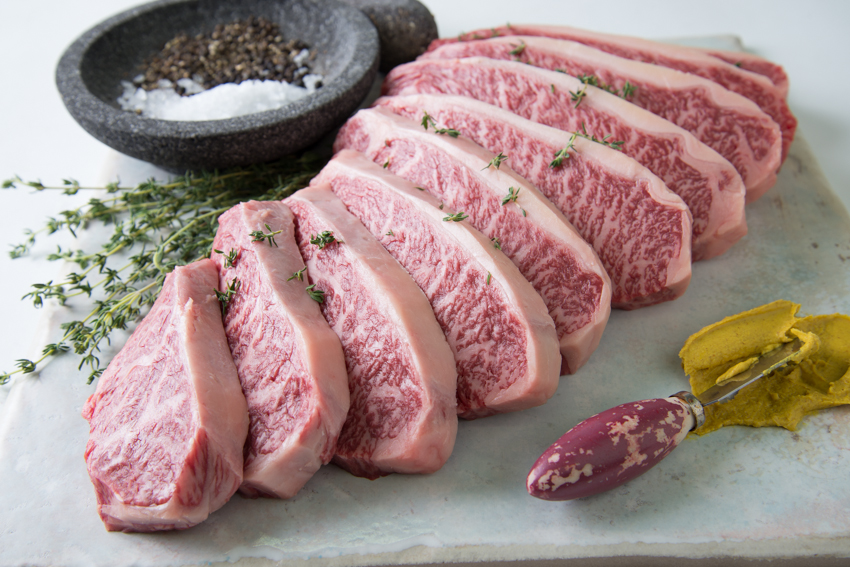When the third annual World Steak Challenge gets underway on 4 July in London, Australian producer Jack’s Creek will be gunning for its third straight win.
“The first year we had no idea we were going to win and then the second year we were just blown away by it – we couldn’t believe it,” said Jack’s Creek managing director Patrick Warmoll.
“Now we’re putting a bit of pressure on ourselves because it’s the hat trick. Last year we didn’t think we’d win it again and we still feel the same now, but I think we’ll be a bit more disappointed if we don’t win it for the third year.”
Rather than rest on their laurels, the family run business is heading to this year’s competition with a new strategy that will tackle the competitions expanded format.
“This year is a little different. They’ve introduce two new categories, one for grass fed and one for grain fed, and they’ve also introduced two new cuts, tenderloin and rib eye, in addition to the striploin, which was judged the previous two years,” Warmoll said.
Warmoll expects the competition to be even fiercer with the new additions.
“I think there’ll be more entries because there are more options. It’ll be interesting to see how all the different cuts stack up against each other,” Warmoll told Hospitality.
“There will still be one grand champion. They’ll have a gold standard for grass fed and a gold standard for grain fed. In the first year that standard was 70 points out of 100 in round one of testing and in the second year it was 75 points out of 100. So they might do something similar for the grain and grass fed categories. Whether it’s for the tenderloins, rib eye or striploin, if they get over the gold standard they’ll go into the running to be champion.
“I believe any one of those cuts could win the competition.”
Jack’s Creek will have a total of six entries in the competition, with the family run producer entering each of the three cuts from both a 450 days grain fed F2+ Wagyu and 150 days grain fed marble score 3+ Black Angus. The striploin, however, is still the best cut to judge argues Warmoll.
“The striploin is the best cut for judging because it’s a single muscle without connective tissue with a small layer of fat on top,” he said.
“With the rib eye, at one end of the muscle there are actually two muscles and they both eat very differently, and there’s some connective tissue in there.
“The tenderloin is renowned for being, well, very very tender, but it doesn’t have the flavour. They’re all chalk and cheese, but having the variety keeps the competition fresh.”
While the company entered the first year on a whim, last year Jack’s Creek carefully selected their entries from a number of animals they identified based on genetics and lifecycle. A similar process was undertaken this year, albeit with some added scrutiny.
“This year we’ve done something really unique. As part of a supply chain tour, we invited Frank Albers – the distributor who enters our Wagyu steak in the competition – as well as 11 other delegates,” said Warmoll.
“We showed them right through the supply chain, from Willow Tree [where the beef is produced] to the feed lot. We took them to the Wagyu conference, and then we took them up to the abattoir, where we actually selected the piece [of steak] we would enter.
“We got in the boning room and identified the marble score eight to nine bodies, and separated them. Then on visual appearance we selected 15 different striploins and rib-eyes, not the tenderloin, which we then narrowed down to three. We took a sliver of meat off each of the three pieces of striploin and ribeye and tried that meat.
“So we know that meat is straight off the carcass after three days and it’s not going to be anywhere near as tender or as flavoursome as the meat will be when they try it at the judging after about 50 or 60 days [of aging]. But it’s an indication of how it will perform. We were really surprised at how tender the meat was.”
Jack’s Creek will send two pieces of meat by special air freight for each of the six entries to make sure an example of each cut makes it to the judges unscathed.
“We’ll enter one piece and then once the competition is over we’ll auction piece two on Facebook. It’s subject to our results obviously, but if it does well then we’ll do that just for a bit of fun,” said Warmoll. “It was Frank Albers’ idea.”
While the competition has seen Jack’s Creek’s profile explode, Warmoll said the industry events like the World Steak Challenge are good for the Australian beef industry as a whole, with more than a third of the gold medallists each year coming from Australia.
“Over the next five years, the world beef market will be wide open. The BSE [mad cow] legacy from the late 90s and 2000s is evaporating. The scandals that are going on with Brazilian meat will go away because they’re the cheapest in the world and everyone gives into price eventually,” said Warmoll.
“So, Australia needs to keep improving the status of its beef. In both previous years of the competition we had the most gold medals and that’s really powerful. It’s really good for all of us.”
This year’s World Steak Challenge takes place on 4 July at The Magic Roundabout in London.

